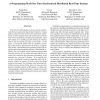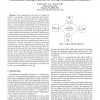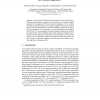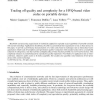4164 search results - page 28 / 833 » Timing model reduction for hierarchical timing analysis |
RTAS
2007
IEEE
14 years 3 months ago
2007
IEEE
Discrete-event (DE) models are formal system specifications that have analyzable deterministic behaviors. Using a global, consistent notion of time, DE components communicate via...
ICCAD
2002
IEEE
14 years 5 months ago
2002
IEEE
— The communication sub-system of complex IC systems is increasingly critical for achieving system performance. Given this, it is important that the on-chip communication archite...
ECRTS
2003
IEEE
14 years 2 months ago
2003
IEEE
We revisit the problem of supertasking in Pfair-scheduled multiprocessor systems. In this approach, a set of tasks, called component tasks, is assigned to a server task, called a ...
TACAS
2007
Springer
14 years 3 months ago
2007
Springer
Abstract. Time Petri Nets (TPN) and Timed Automata (TA) are widely-used formalisms for the modeling and analysis of timed systems. A recently-developed approach for the analysis of...
JVCIR
2006
13 years 9 months ago
2006
Bandwidth and processing requirements of multimedia applications typically exceed capabilities of portable terminals with current technology. Applications should hence be able to ...




